The 25 Best Live R&B and Soul Albums (with EPs)
Whether stripped to acoustic bones or expanded with DJ scratches, each set reinvents its own rules. This unranked list celebrates artists brave enough to pull the trigger live.
The best R&B and soul concerts leave a lasting impression. When engineers catch that energy without sanding off its edges, the result feels less like a recording than a doorway back to the room. These albums do exactly that. Some were pressed in limited runs and shelved for years, while others debuted at Number One the week they dropped. However, each turns a fleeting performance into a permanent charge.
Collectively, they cover six decades and just as many definitions of “soul.” You’ll hear a crooner loosen his tie in a smoky club where dancers drown out his microphone, a future funk icon re‑wiring a ballad with nothing more than harp and falsetto, and a spoken‑word radical who treats rhythm as a megaphone. Venues shift from sweaty neighborhood bars to gilded theaters, yet the through‑line is the same, where a singer feels the audience lean in and decides to jump further.
Sequencing mattered. Where a studio track might open with tidy piano, the live version could begin with three minutes of band vamp while the star stalks the stage, finding the right key. Medleys materialize on the fly, gospel flourishes bloom in songs that never hinted at church, and in one case, the crowd supplies an entire chorus before the singer reaches the microphone. These recordings preserve those deviations—proof that risk often trumps rehearsal.
What follows is a countdown that favors goose‑bump moments over chart stats. Expect surprises in placement, a few omissions that might spark debate, and plenty of small clues—like your favorite drum pattern or a shouted city name—to signal why each entry belongs. The full roll call starts after the page break; until then, picture stage lights dimming, a drummer clicking sticks, and a singer taking that first breath.
James Brown, Live at the Apollo
James Brown’s 1962 night at the Apollo remains a study in momentum and release. He constructs the set like a preacher’s sermon, with a dramatic introduction that blooms into call‑and‑response with a screaming audience, then plunges straight into the feverish groove of “I’ll Go Crazy.” The show alternates between horn‑driven boogaloo and tender ballads; his plea on “Try Me” melts into falsetto whispers, while the jazz‑inflected “Think” finds him scatting over staccato horns. A slow‑burning medley unspools through several early hits before climaxing with an interactive “Night Train,” where Brown egged on the crowd, pushing them to a rapturous frenzy. Even the bonus tracks capture his instinct for pacing, offering a slinkier take on “Think” and an abbreviated “I’ll Go Crazy” that leaves space for the audience’s ecstatic roar. — P
Curtis Mayfield, Curtis Live!
Recorded at the intimate Bitter End in early 1971, Curtis Live! traps the smoky atmosphere of a club in the grooves. Mayfield threads songs from his solo debut with Impressions staples, letting a lean band create space for the audience’s murmurs and his own falsetto to float. “Check Out Your Mind” and “Gypsy Woman” feel rawer than their studio counterparts as drummer Tyrone McCullen and percussionist Henry Gibson sketch skeleton grooves. Mayfield’s guitar vamps allow him to focus on his voice and lyrics; “The Makings of You” becomes a tender lullaby, while his politicized closer “(Don’t Worry) If There’s a Hell Below We’re All Going to Go” gains urgency when delivered directly to a crowd. — B.O.
Aretha Franklin, Aretha Live at Fillmore West
Aretha Franklin took over a rock temple and turned it into a sanctuary of soul. Onstage at San Francisco’s Fillmore West in 1971, she reclaims “Respect” and “Spirit in the Dark” with gospel‑soaked fervor while revisiting contemporary material; “Love the One You’re With,” “Eleanor Rigby,” and “Bridge Over Troubled Water” are reinvented as R&B sermons. The interplay between Franklin and King Curtis’ band crackles; she teases, stretches, and explodes into melisma, and the horn section answers every outburst. Her piano anchors the groove but also sets up spontaneous detours, such as the show‑stopping reprise of “Spirit in the Dark” that finds her trading bars with Ray Charles before leading a churchy vamp. The album captures a powerhouse vocalist making other people’s songs her own, and in the process, expanding the notion of what live soul can be. — B.O.
Donny Hathaway, Live
Was there anything to say about this immaculate performance? Split between the Troubadour in Hollywood and the Bitter End in New York, Donny Hathaway’s 1972 live album feels both like a party and a confession. His Fender Rhodes glistens as he guides the audience through a 12‑minute “The Ghetto,” orchestrating their claps and wails and turning the song into a communal jam. Hathaway’s band—particularly guitarist Cornell Dupree and bassist Willie Weeks—stretches out on the 11‑minute “Voices Inside (Everything Is Everything),” finding space for jazz‑funk explorations. Covers such as Carole King’s “You’ve Got a Friend” invite the crowd to anchor the chorus, while originals like “Little Ghetto Boy” expose his vulnerabilities and draw audiences closer. Hathaway moves between ebullient cheerleader and introspective preacher, making every extended vamp feel purposeful. — P
Bill Withers, Live at Carnegie Hall
Where many live albums assemble hits, Bill Withers crafts a narrative. Recorded in 1972, Live at Carnegie Hall transitions seamlessly from raucous funk to hushed storytelling, evoking the feeling of an inclusive gathering. His lived experiences infuse songs like “I Can’t Write Left-Handed,” a sobering tale of a war‑wounded soldier, and “Better Off Dead,” a frank meditation on suicide, with a gospel‑like testimony. He prefaces “Grandma’s Hands” with a humorous reminiscence before turning the song into an emotional benediction. “Lean on Me” blossoms into a communal hymn as the audience’s voices merge with his, and the closing medley “Harlem/Cold Baloney” transforms the hall into a funk club. Withers’ warm baritone, unhurried phrasing, and wry wit make the concert feel like time spent with an old friend. — B.O.
Earth, Wind & Fire, Gratitude
At their mid‑‘70s peak, Earth, Wind & Fire made concerts feel like cosmic ceremonies. The live side of Gratitude crackles with this energy: “Shining Star” bursts with syncopated horns and earth‑shaking bass, and “Yearnin’ Learnin’” becomes a funk workout. Philip Bailey’s falsetto on an extended “Reasons” soars toward the heavens, punctuated by a piercing alto sax solo from guest Don Myrick. Maurice White orchestrates the proceedings like a master of ceremonies, directing the band through buoyant renditions of “Devotion” while leaving space for improvisation. Interspersed studio tracks, such as “Can’t Hide Love” and “Sing a Song,” offer polished contrast, but the heart of the album lies in the blend of spiritual uplift and dance-floor propulsion in the live performances. — B.O.
Gil-Scott Heron & Brian Jackson, It’s Your World
Half studio laboratory, half live block party, this 1976 double‑LP finds Scott‑Heron and Jackson fusing street reportage with late‑night jam‑session warmth. The title track opens on a rolling bass line, congas, and flute fluttering around Scott‑Heron’s invitation to claim the future; the groove feels communal, as if the Midnight Band is passing the mic around the room. Live cuts from Boston’s Paul’s Mall—“The Bottle,” “Home Is Where the Hatred Is,” “Johannesburg”—stretch past their studio frames, solos spiraling while Scott‑Heron toggles between preacher, poet, and neighborhood DJ. Even in protest songs, he sounds buoyant, urging dancers to listen closely without leaving the floor. The studio sides balance the exuberance with spacious Fender Rhodes chords and Jackson’s glassy synth textures, allowing poems like “It’s Your World” to reappear in quieter focus. Righteous, funky, occasionally rough, always alive to the possibility that rhythm and radical empathy might move bodies and minds in the same breath. — P
Natalie Cole, Natalie... Live!
Natalie Cole’s live album captures her at two venues—Los Angeles’ Universal Amphitheatre and New Jersey’s Latin Casino—just before she took time off for motherhood. She calls the set “wailin’ songs,” and she approaches it with the swagger of her idols Chaka Khan, Janis Joplin, and Patti LaBelle, grabbing the audience and refusing to let go. Funk‑fueled numbers like “Sophisticated Lady” and “Party Lights” crackle with horns and a full orchestra, while ballads such as “I’m Catching Hell (Living Here Alone)” reveal her husky ache and demand matching passion from her backing singers. The show’s apex arrives with “I’ve Got Love on My Mind,” where she teases the crowd with an elongated introduction before unleashing a torrent of improvisations and rhapsodic hollers. She invites her band to push boundaries, urging them to repeat riffs and incorporate wild ideas. Covers of “Cry Baby,” “Lucy in the Sky with Diamonds,” and “Something’s Got a Hold on Me” find her bridging classic soul and psychedelic rock, while a gospel‑flared “Que Sera, Sera” is sung with the bluesy fervor of a woman determined to live her life on her terms. — B.O.
Maze featuring Frankie Beverly, Live in New Orleans
Maze’s 1980 performances at New Orleans’ Saenger Theatre capture a band that’s both relaxed and impossibly tight. Mentor Marvin Gaye had urged them to channel their stage magic into a record, and the hometown crowd reciprocates with fervor. Frankie Beverly’s smooth vocals glide over grooves that simmer rather than combust, making songs like “Happy Feelin’s” feel warmer live than in the studio. During “Joy and Pain,” the audience takes over the refrain in an extended a cappella section, turning the lyric into a collective mantra. The set also introduces “Before I Let Go,” a supple groove that would become an enduring Black cookout staple. The album’s success cemented Maze as a premier touring act and deepened their bond with New Orleans, a city that Beverly credited with making them feel like they were born and raised there. — P
Sam Cooke, Live at the Harlem Square Club, 1963
Sam Cooke steps onto a sweltering Miami stage and trades the satin of his pop singles for grit and sweat. The band tears into a breakneck “Feel It,” horns punching through cigarette haze while Cooke works the room like a gospel shouter turned jukebox hero, stretching notes until the crowd screams back at him. Mid‑set, he pivots from a knife‑sharp “Chain Gang” into a pleading “Bring It On Home to Me,” riding the audience’s echoes to rebuild the song in real time. RCA shelved the tapes—too raw for the crossover market—but that very rawness is now the draw: you hear his voice roughen, you feel the band lean harder, and you sense a performer testing how much abandon his repertoire can bear. Released two decades later, the album stands as his most unvarnished document, revealing that behind the gentleman crooner was a soul preacher ready to burn down the club and start the party over again. — B.O.
Mariah Carey, MTV Unplugged (EP)
Before this 1992 performance, Mariah Carey had never embarked on a major tour, and skeptics questioned her live capabilities. She silenced them with an intimate yet lavish set accompanied by a 25‑piece ensemble, including a 10‑voice gospel choir and a brass section. Stripped of studio gloss, songs like “Someday” and “If It’s Over” become raw showcases for her melismatic runs, while the closer “Can’t Let Go” reduces the arrangement to piano and voice, revealing fragility beneath her bravado. Her duet with Trey Lorenz on the Jackson 5’s “I’ll Be There” turns into the evening’s emotional crest; fans demanded its release as a single, and it subsequently topped the Billboard Hot 100. Throughout the set, Carey’s charisma and vocal agility are supported by a band that shifts from soulful grooves to gospel crescendos. The performance’s success transformed a one-off television taping into a triple-platinum EP, demonstrating that she could bring studio-quality perfection to a live, unedited setting. — B.O.
Various Artists, Uptown MTV Unplugged
This unplugged session brings together a roster of early‑‘90s R&B and hip‑hop stars from the same family tree. Jodeci and Christopher Williams attack their songs with fervent, gospel‑inflected energy, sometimes straining at the seams of the acoustic format. Mary J. Blige reins in her usual grit for a more measured approach, letting her voice float over sparse guitar figures. Heavy D injects humor into his verses while maintaining enough swagger to keep the crowd engaged. Father MC straddles the line between crooning and rap, adopting both balladeer and comedian personas within a single song. The compilation’s charm lies in its rough edges and the way it pairs new jack swing acts with the stripped‑down intimacy of an acoustic stage, revealing the personalities behind the hits. — P
Maxwell, Unplugged (EP)
Maxwell’s 1997 Unplugged set is a lesson in restraint and reinvention. Backed by a small ensemble with guitar, bass, percussion, and saxophone, he recasts five songs from his debut into languid, jazzy grooves—saxophones wail on “The Suite Urban Theme (The Hush),” and tempo shifts add drama to “Mello: Sumthin (The Hush).” His reading of Kate Bush’s “This Woman’s Work” is the emotional centerpiece. You know, harp‑like chords and airy vocalizations set a hushed mood before his falsetto soars over a simple piano and string arrangement, turning the song into an intimate plea before getting an official release four years later. By stretching each phrase without ever breaking the emotional thread, he earned recognition as a future R&B innovator and delivered one of the most memorable performances in the history of Unplugged. He even takes Nine Inch Nails’ “Closer” into his sensual orbit, proving his range and daring, which signals that Maxwell was prepared to push neo‑soul beyond its conventions. — B.O.
Erykah Badu, Live
Only months after her debut, Erykah Badu committed her stage show to record, defying expectations that an artist should wait years before a live release. She fleshes out Baduizm songs with fuller instrumentation, featuring bassist Hubert Eaves IV, keyboardist Norman Hurt, and drummer Charles “Poogie” Bell, who provide elastic rhythms, while she weaves references to Mary J. Blige’s “Love No Limit” and Jeff Lorber’s “Rain Dance” into a reworked “On & On.” New single “Tyrone” steals the show; over a simple vamp, Badu instructs her deadbeat lover to “call Tyrone,” and the audience supplies the backing vocals—this witty call‑and‑response anthem reached #1 on R&B radio. Throughout the set, she quotes ‘70s and ‘80s grooves, seamlessly inserting Heatwave’s “Boogie Nights,” Mary Jane Girls’ “All Night Long,” Tom Browne’s “Funkin’ for Jamaica,” and even Miles Davis’s “So What” into her overture. The show ends with a tour‑de‑force cover of Rufus & Chaka Khan’s “Stay,” where she hits sky‑high notes while hinting she has been downplaying her range. With its mixture of improvisation, humor, and respect for tradition, Live cements Badu as a fearless performer. — P
D'Angelo, Live at the Jazz Café, London
Recorded in September 1995 when his debut was barely two months old, D’Angelo’s London set captures a musician impatient to stretch out. He opens with snippets of Mandrill’s “Fencewalk” and Ohio Players’ “Sweet Sticky Thing” before sliding into a muscular run through his own songs—“Jonz in My Bonz” turns upbeat, “Lady” quickens its tempo, and his band’s female background singers, including Angie Stone, add gospel‑tinged harmonies. A tender cover of Smokey Robinson and Marv Tarplin’s “Cruisin’” melts the crowd, while guitarist Mike Campbell shines on Al Green’s “I’m Glad You’re Mine.” They also tackle Skip Scarborough’s “Can’t Hide Love,” popularized by Earth, Wind & Fire, with joyous abandon. The show closes with an 11‑minute “Brown Sugar” that finds D’Angelo vamping over the groove and teasing future directions. The recording documents an artist who had just exploded yet was already charting new paths. — B.O.
Jill Scott, Experience: Jill Scott 826+
Jilly from Philly commands her band with joy, fury, and grace, ad‑libbing and stretching notes as if conversing with friends. During “Do You Remember,” fans sing the introduction before she does, and she encourages call‑and‑response exchanges that blur the line between performer and audience member. The live “He Loves Me (Lyzel in E‑flat)” swells into operatic bliss, while rearrangements like “Love Rain” transform laments into suites of recovery and resistance. She nods to Washington, D.C.’s go‑go scene on “It’s Love,” invites a saxophonist to spar with her vocals on “The Way,” and scat‑sings like a jazz veteran. The album feels like a communion where Scott ministers, teaches, and celebrates, solidifying her reputation as a dynamic live force. — B.O.
Raphael Saadiq, All Hits at the House of Blues
Raphael Saadiq turns a 2002 night at the House of Blues into a two‑disc journey through his musical universe. He leads a tight funk band augmented by DJs, horns, and a diverse array of special guests; the evening transitions from sultry grooves to slippery funk without losing its pulse. Midway through, he reunites with Tony! Toni! Toné! for a seven‑song mini‑set that traces his evolution from new jack swing to his own brand of 21st‑century sound. Devin the Dude adds smooth verses to “Just a Man” and “Missing You,” Joi spices up “Copy Cat,” and DJ Quik’s turntable scratches heat up “Let’s Get Down. Later, Ledisi and Goapele lend harmonies to the contemplative “Different Times,” and D’Angelo appears for a jubilant encore of “Be Here.” Saadiq commands the stage like a seasoned bandleader, balancing nostalgia and innovation in a show that feels both communal and daring. — P
Luther Vandross, 2003: Live at City Radio Hall
This one is close to my heart as I attended this concert. The “Velvet Voice” gave his songs extra dimension onstage. Vandross’s 2003 concert opens with “Never Too Much” and cascades through hits like “Take You Out,” “If Only for One Night,” and “Here and Now,” each rendered with more soul than their studio versions. He promises the audience, “We gon’ sing ’em all for you tonight,” and the rapport is palpable. His phrasing glides from playful runs to aching croons, and the band’s shimmering arrangements make room for his melismatic flourishes. When he toggles between uptempo grooves and torch ballads, the hall erupts in cheers and tears. The recording not only captures a master vocalist in full command but also stands as a tender farewell, inviting listeners to dance, reminisce, and feel the magnitude of his legacy. A moment that I will never forget. — P
Alicia Keys, Unplugged
For her 2005 Unplugged set, Alicia Keys sheds some studio gloss but not her flair for spectacle. Seated at her piano yet surrounded by horns, strings, and a rhythm section, she recasts hits from her first two albums and introduces new material with confidence. The ensemble’s tight grooves allow her to improvise and vamp; rather than telling stories between songs, she lets the music speak and keeps the energy flowing. Her cover of Prince’s “How Come U Don’t Call Me Anymore” morphs into an extended jam built on syncopated handclaps and bluesy piano riff. An unreleased song, “Stolen Moments,” reveals a freer side of Keys, as she leans into a huskier tone while the band rides a slow burn. Throughout, she engages the Brooklyn Academy of Music audience with warmth and playfulness, proving that her classically trained chops and gritty soul instincts can coexist on an “unplugged” stage. — P
Leela James, Live in New Orleans
Recorded when she was just twenty‑one, Leela James’ six‑song set at the House of Blues demonstrates raw power and earnest conviction. She storms out with “Long Time Coming,” her voice gritty and full, commanding the room from the first note. “My Joy” turns into an emotional journey; she becomes so choked up by the song’s message that she pauses mid‑verse, regroups, and then belts the chorus with even more fervor, telling the crowd that love will make you cry. Her finale is a gospel‑infused rendition of Sam Cooke’s “A Change Is Gonna Come,” which grows into a worship session as she declares that God is “all up in my soul.” By combining blues, gospel, and soul in such a short program, James proves that the genre’s core—passionate storytelling delivered with an unfiltered voice—remains alive and well. — B.O.
Lalah Hathaway, Live
Lalah Hathaway’s live album doubles as a de facto greatest hits and an homage to her father, Donny. Recorded partly at Los Angeles’ Troubadour—the same venue where he cut his classic Live—it includes a note‑perfect cover of “Little Ghetto Boy” in the same key, summoning his spirit. Hathaway asks attendees to put their phones away, turning the room into a participatory choir; call-and-response exchanges make the audience’s feedback an integral part of the music. Her technical control astounds—she can float a melody for 37 seconds and then run up and down scales without strain. She exercises restraint on slow‑cooked reinterpretations like “I’m Coming Back,” beginning a cappella and gradually introducing ululations before the band joins. — B.O.
Mavis Staples, Live in London
Approaching eighty, Mavis Staples infuses her live set with the energy of a dancer and the grit of a fighter. Her reimagining of Talking Heads’ “Slippery People” replaces jittery new wave with a groove that moves and breathes, avenging the appropriation of “Take Me to the River” by reclaiming funk for herself. She revisits songs from recent albums—“Take Us Back” from Livin’ on a High Note and “Who Told You That” from If All I Was Was Black—pressing and pushing her vocals against a tight band to build dramatic tension. Even familiar Staples Singers classics feel refreshed; her interplay with guitar and drums creates release after long, suspended notes. The cover photo shows her with fists raised, to the physical price of creating beauty; onstage, she pays that price willingly, turning each performance into a rallying cry. — P
Marvin Gaye, What’s Going On Live
Marvin Gaye’s only complete live performance of What’s Going On was recorded in May 1972 at Washington, D.C.’s Kennedy Center. Awkward stage banter and restarted songs reveal his stage fright and minimal rehearsal, but these imperfections humanize the concert. Backed by a large brass and string ensemble, Gaye’s tenor still shines; horns swell around him on “Wholy Holy” and “Save the Children,” and his falsetto drifts over congas and bass lines even when he falters. When he finds his footing, particularly during “Inner City Blues,” he locks into a groove that suggests the possibility of live social commentary as catharsis. The hometown audience applauds his courage, and the overall effect is less about precision than about witnessing an artist wrestle with his masterpiece in public. — B.O.
Bilal, Live at Glasshaus
Bilal’s first live album is long overdue, which makes you feel in a Brooklyn loft with a hundred fans. The set reimagines his catalog with help from Robert Glasper’s piano, Questlove’s drums, and Burniss Travis’ bass. Their rendition of “All for Love” stays faithful to the original; Glasper’s tender piano melody gives way to a solo that quotes Miles Davis’ “Milestones,” and Bilal reclaims the mic with growls and squeals that show why his concerts are so memorable. The unreleased song “Levels,” co-written with Adrian Younge, unfolds over a slow, smooth beat, blending classic soul elements with modern touches to explore the depth of commitment in love. Between songs, interludes with Questlove and Common feel like overheard conversations as they reminisce about his artistry. The stripped‑down arrangements and raw honesty make it feel as though you’re sitting in the front row while he scats, squeals, and finds new edges in his voice. — P
Whitney Houston, The Concert for a New South Africa (Durban)
Do you know how much we’ve been waiting for an official release? The 1994 stadium concert in Durban doubled as a celebration and a benediction. Thirty years on, the live album highlights how Whitney Houston marked the end of apartheid and Nelson Mandela’s election by bringing hope and glamor to a newly unified nation. Her voice is as stunning onstage as it is in the studio, and her setlist features songs about love and resilience that unite thousands. She opens with Stevie Wonder’s “Love’s in Need of Love Today,” segues into his “Master Blaster (Jammin’)” and Chaka Khan’s “I’m Every Woman,” then steers the show toward gospel with heartfelt renditions of “Jesus Loves Me” and “Amazing Grace” after telling the hymn’s origin. A nine‑minute “I Will Always Love You” showcases fluttering runs and belted climaxes that prompt the crowd to erupt again. She finishes with “Home” from The Wiz, expressing joy at finally coming to see her “people” and reminding listeners that music and love can persist despite struggle. — B.O.


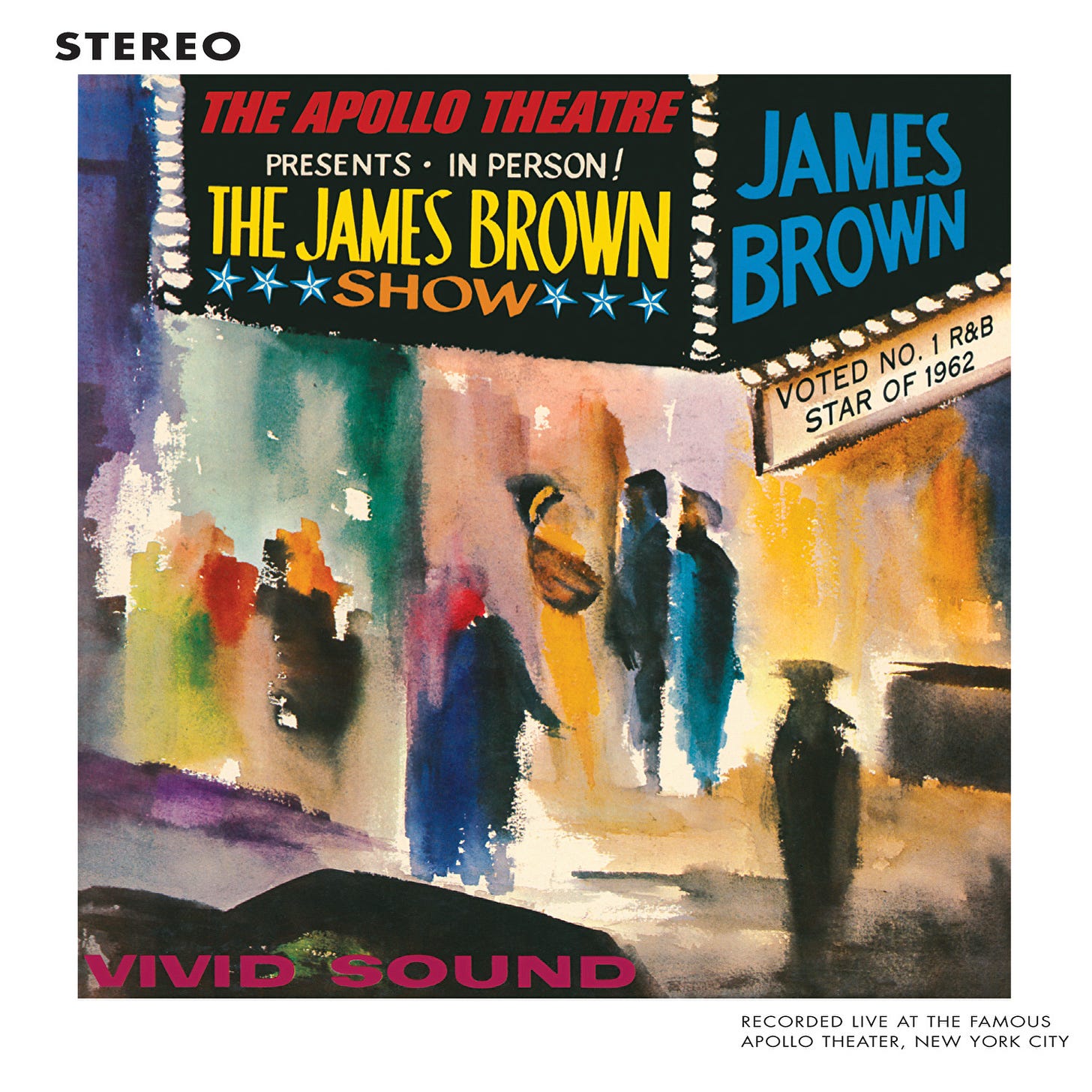

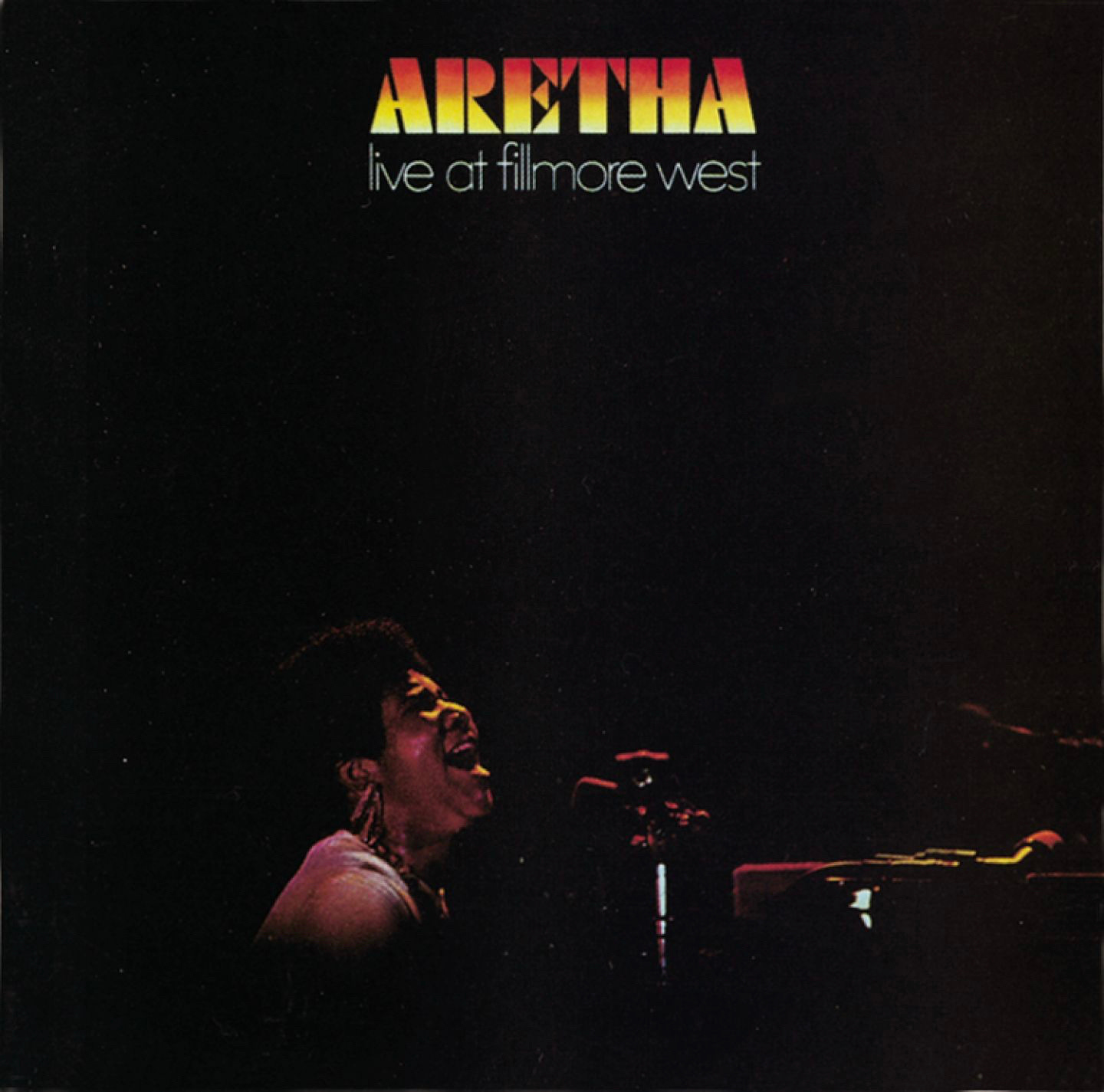
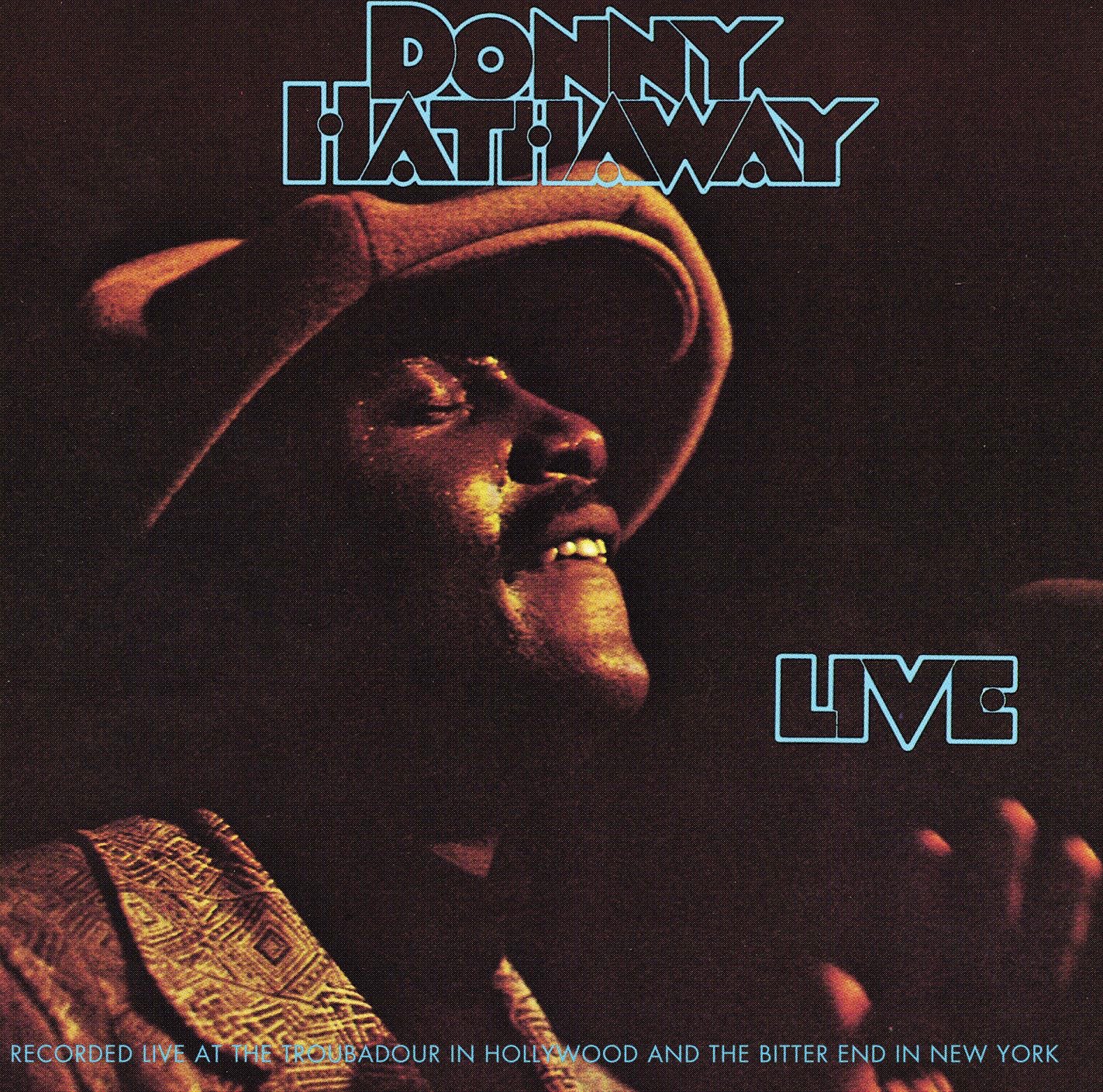
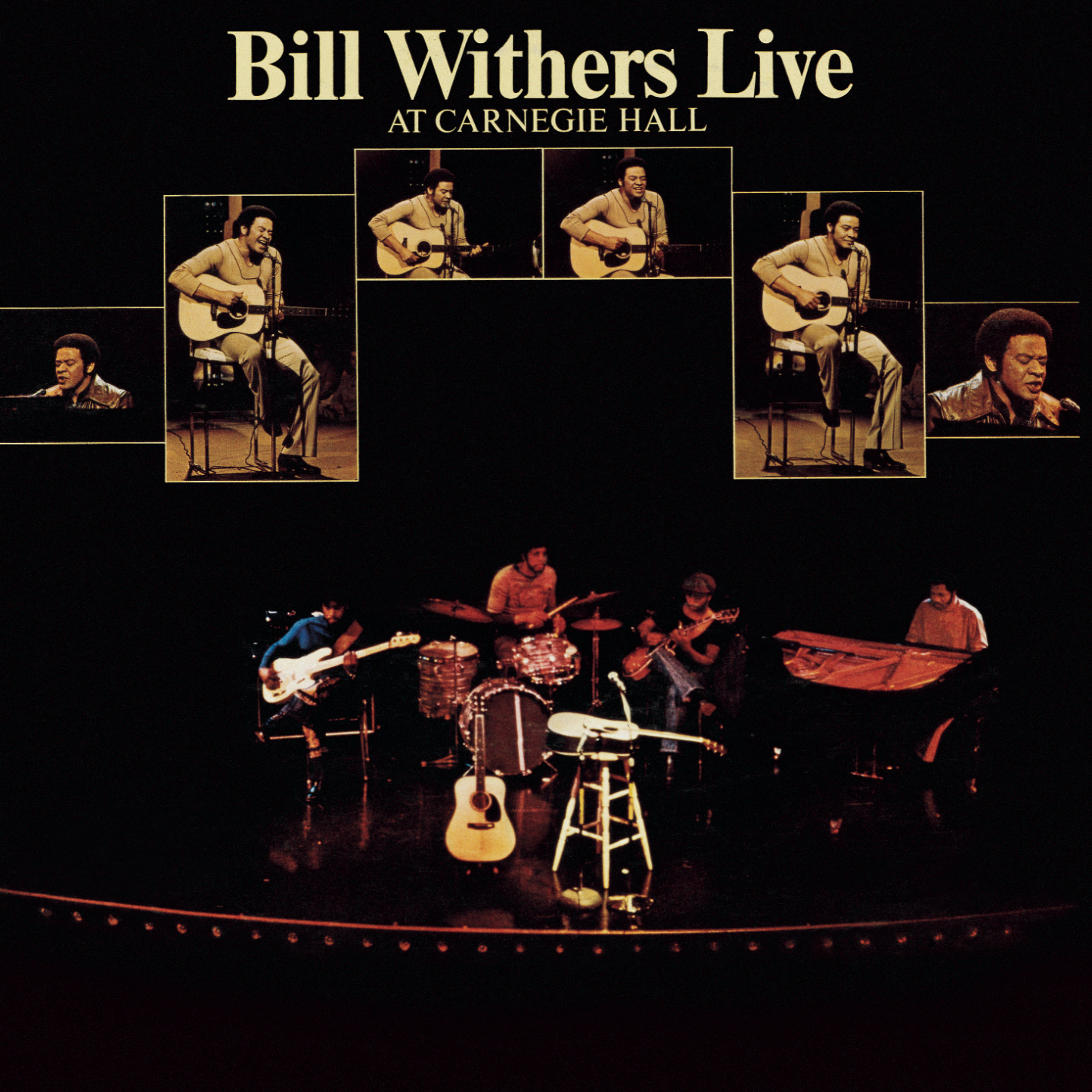
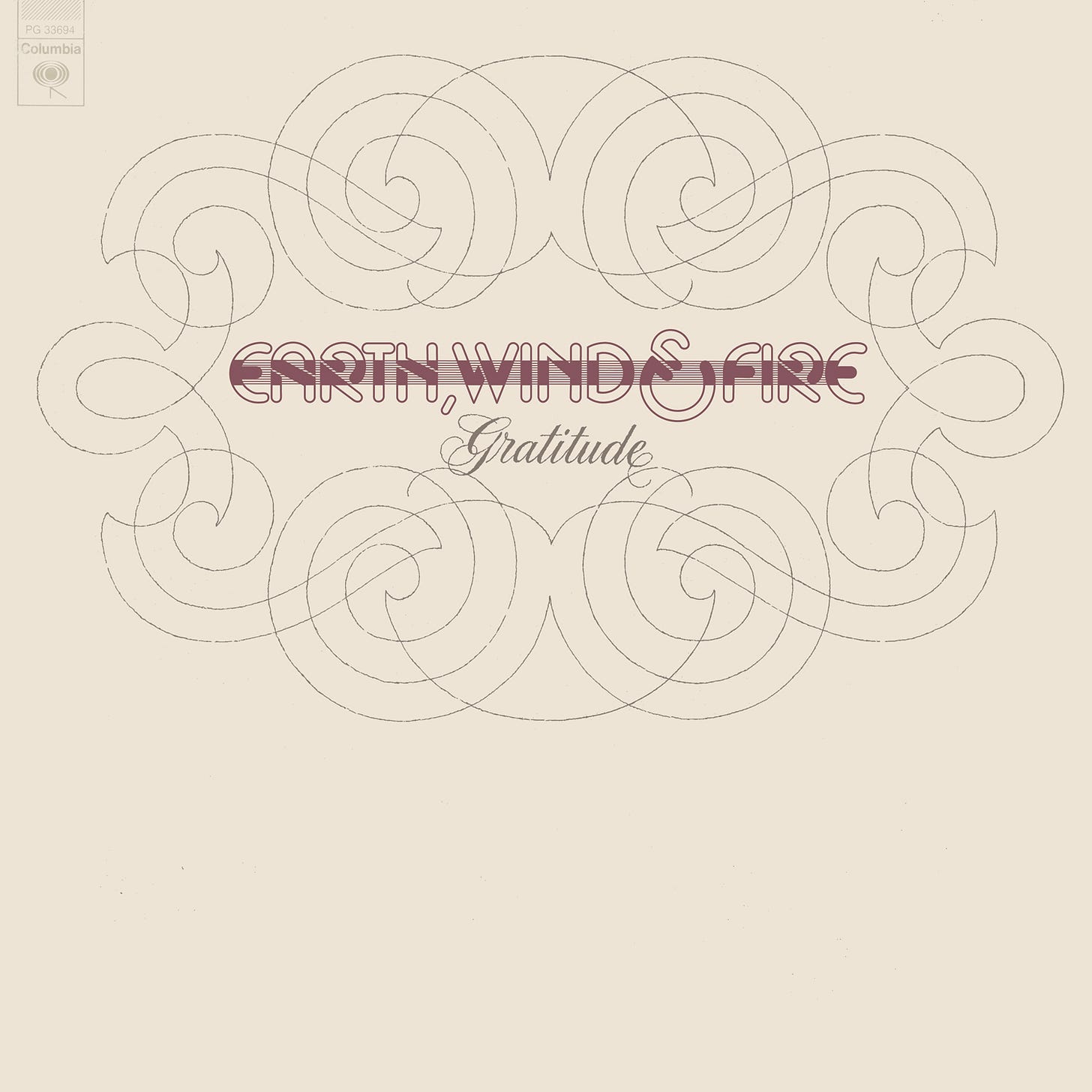
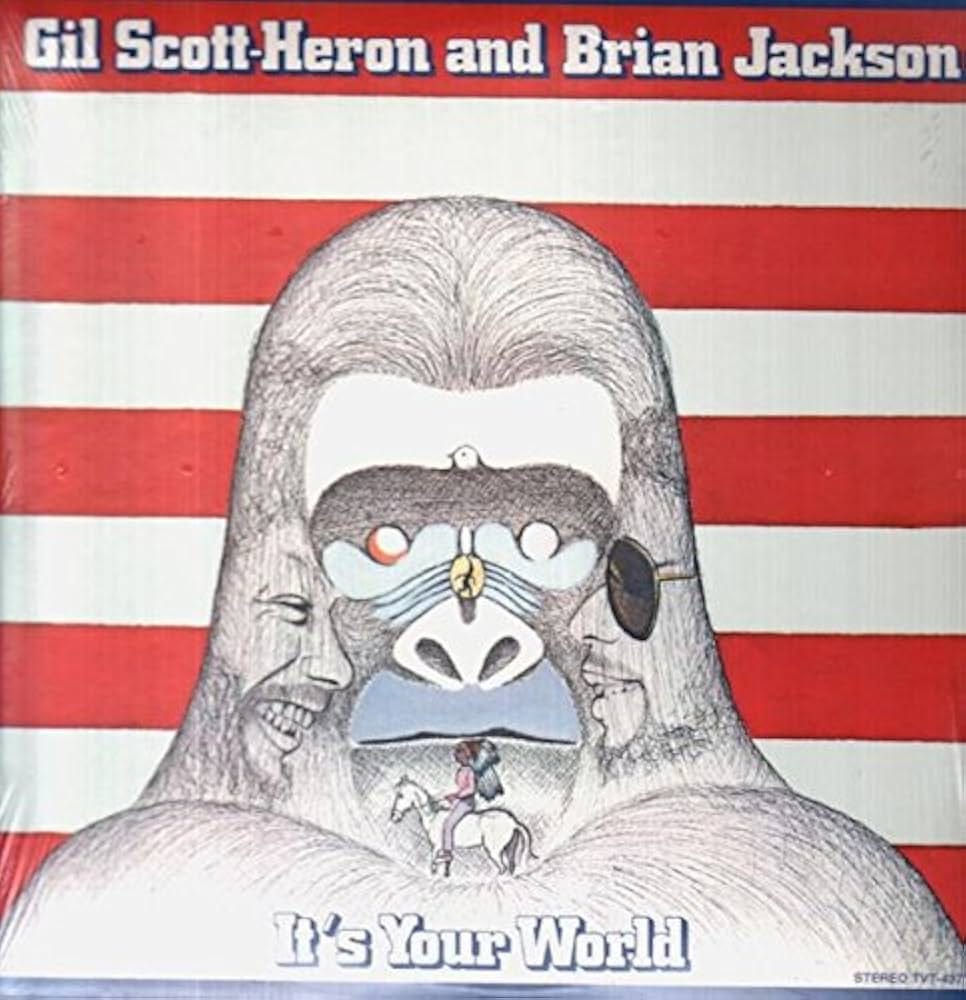
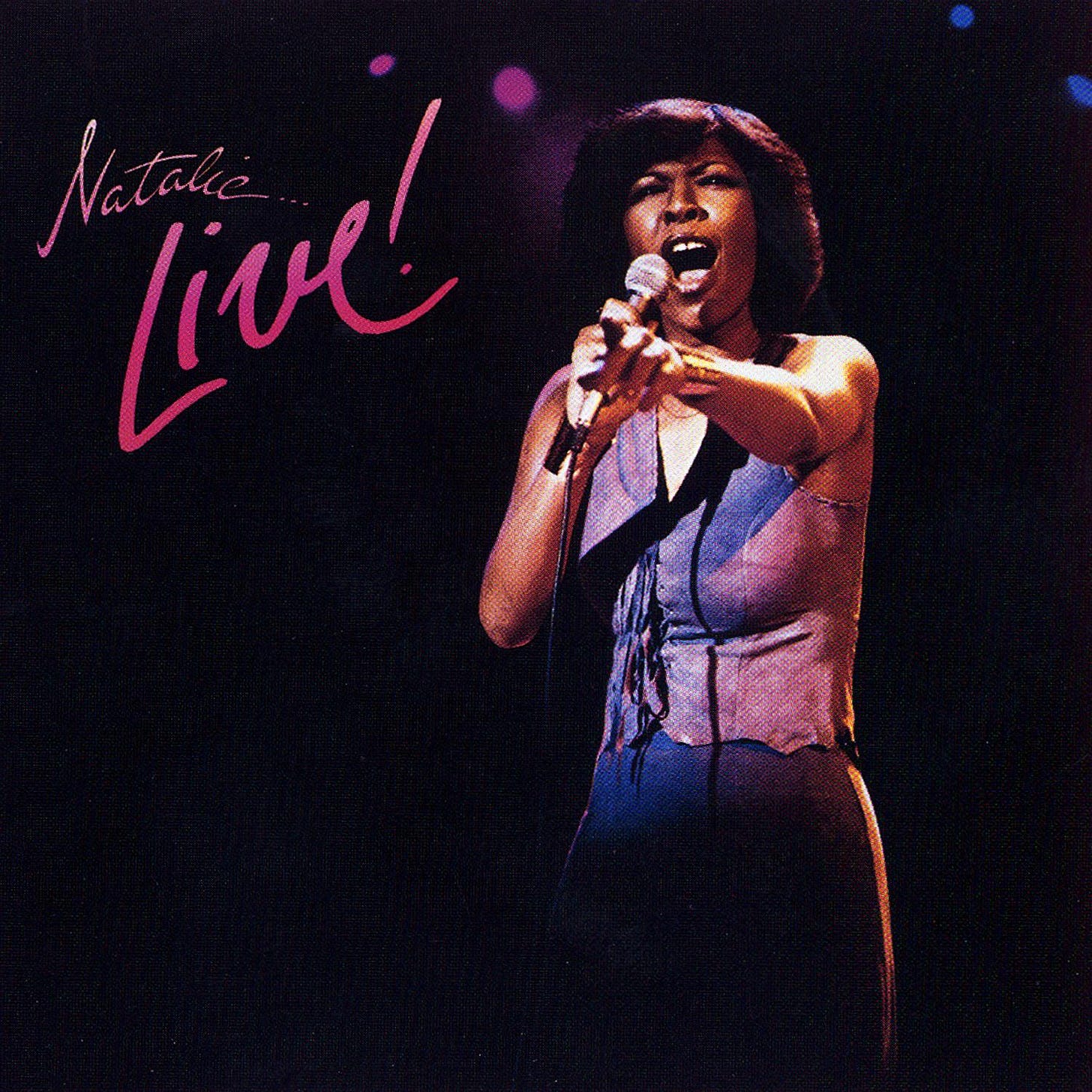
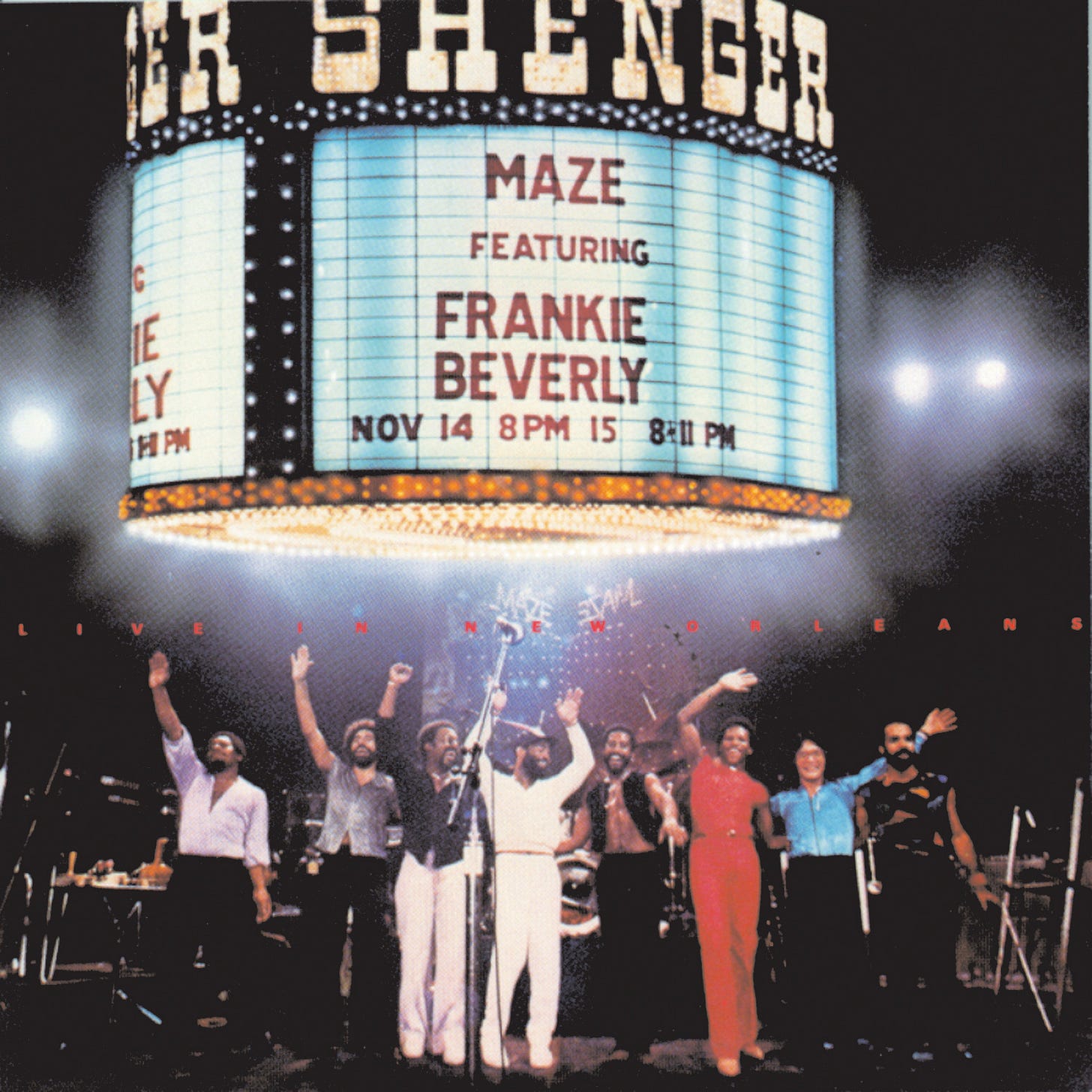
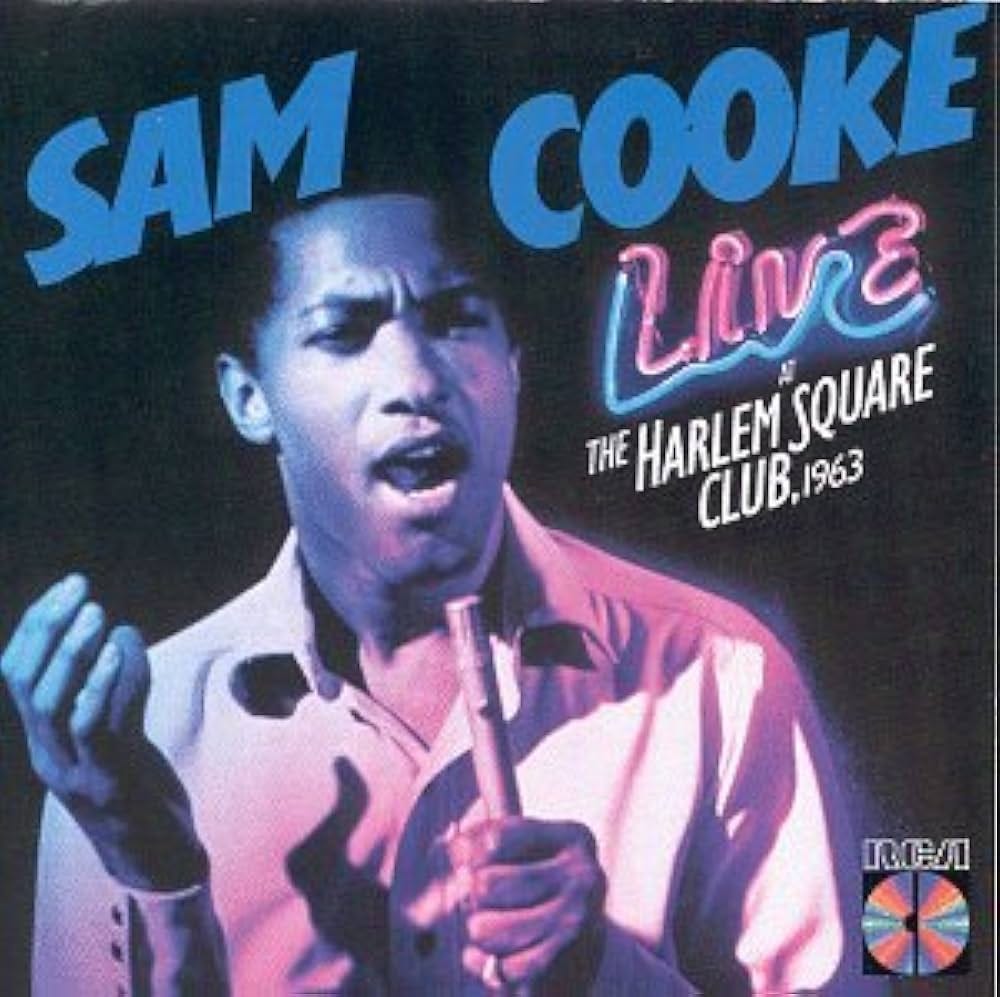
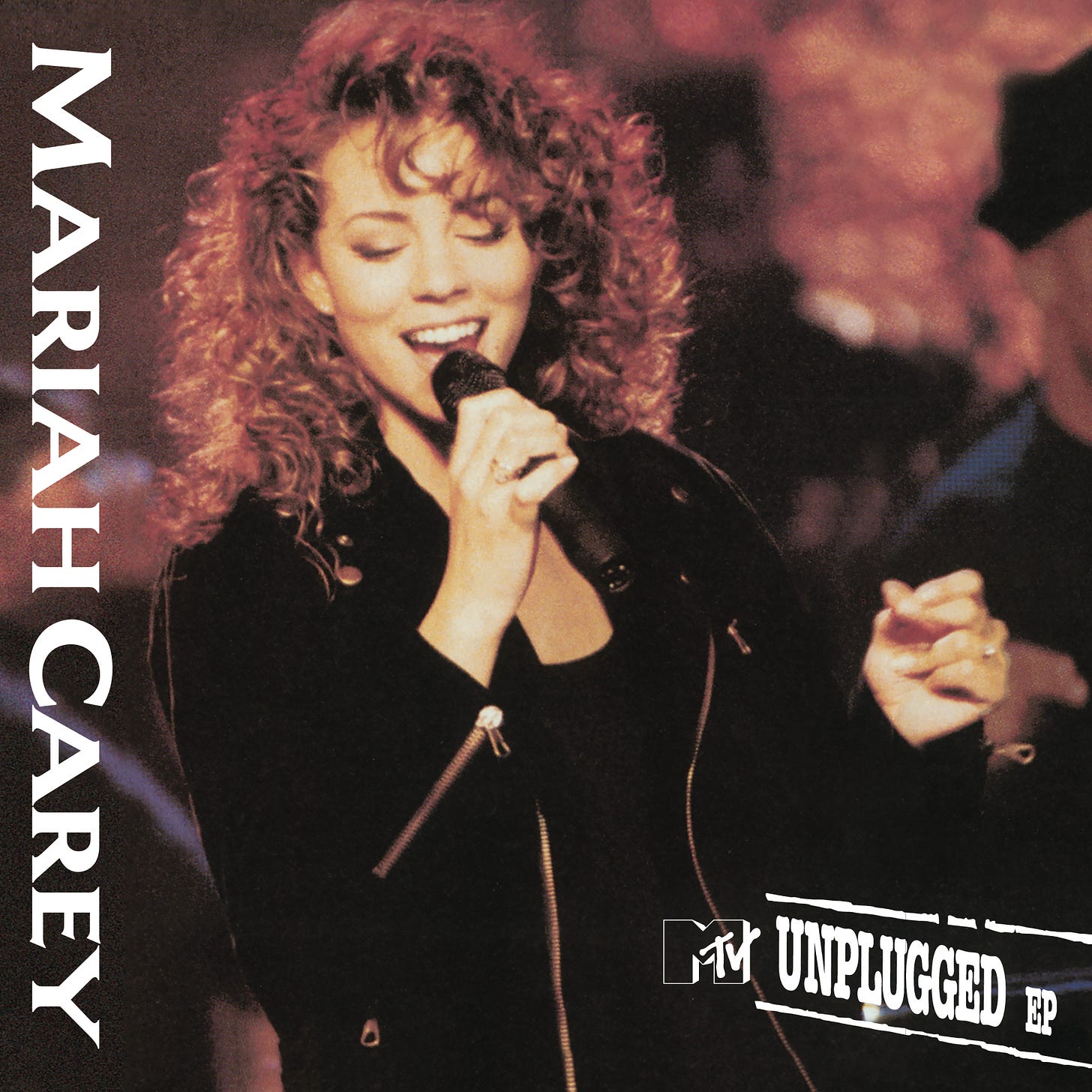
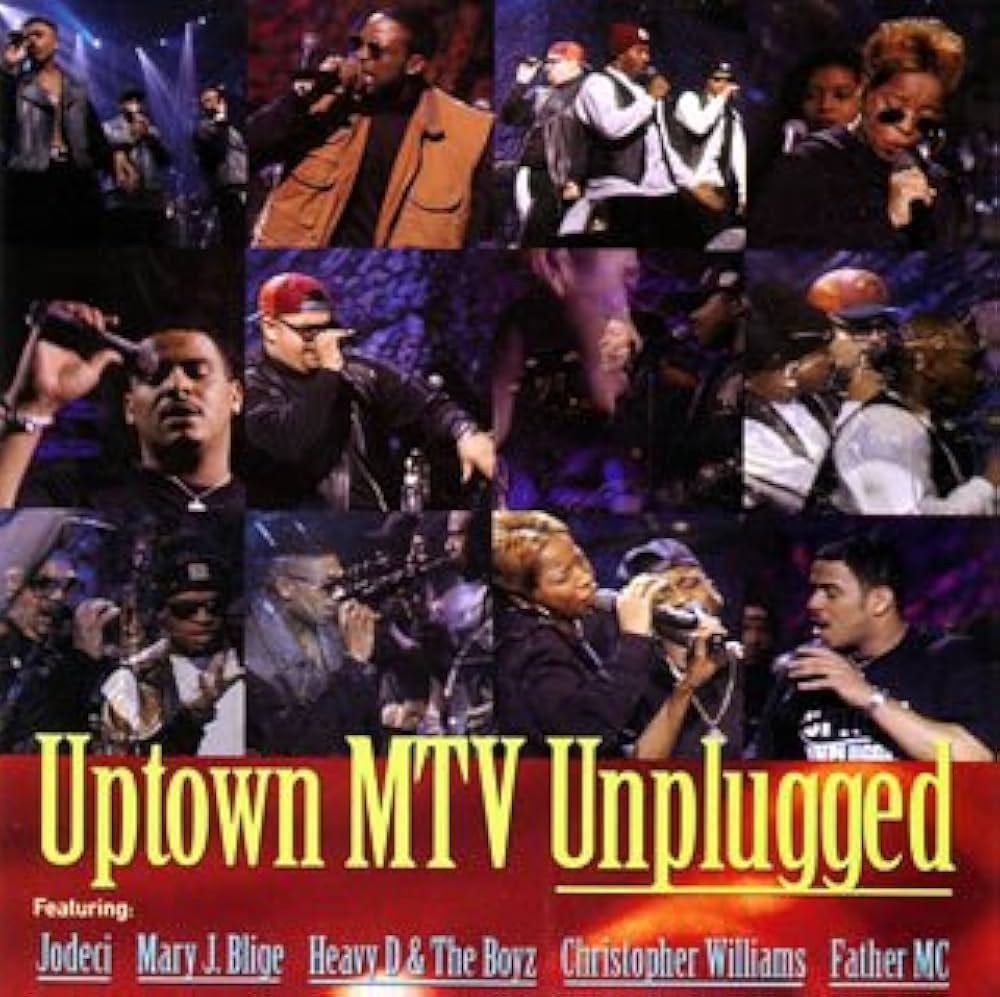
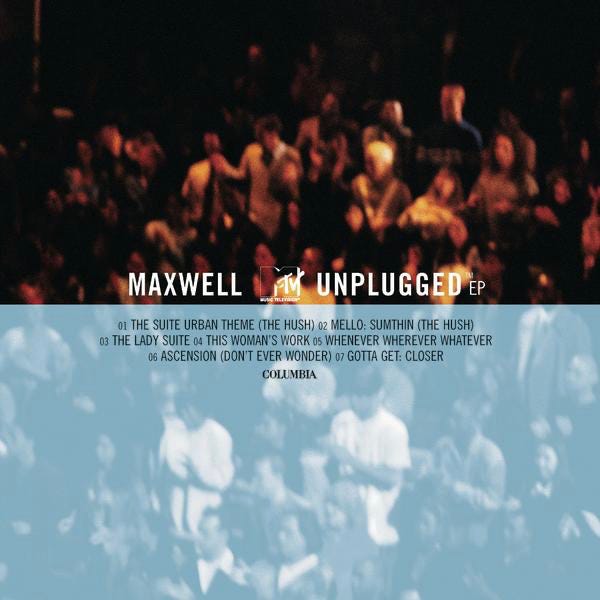
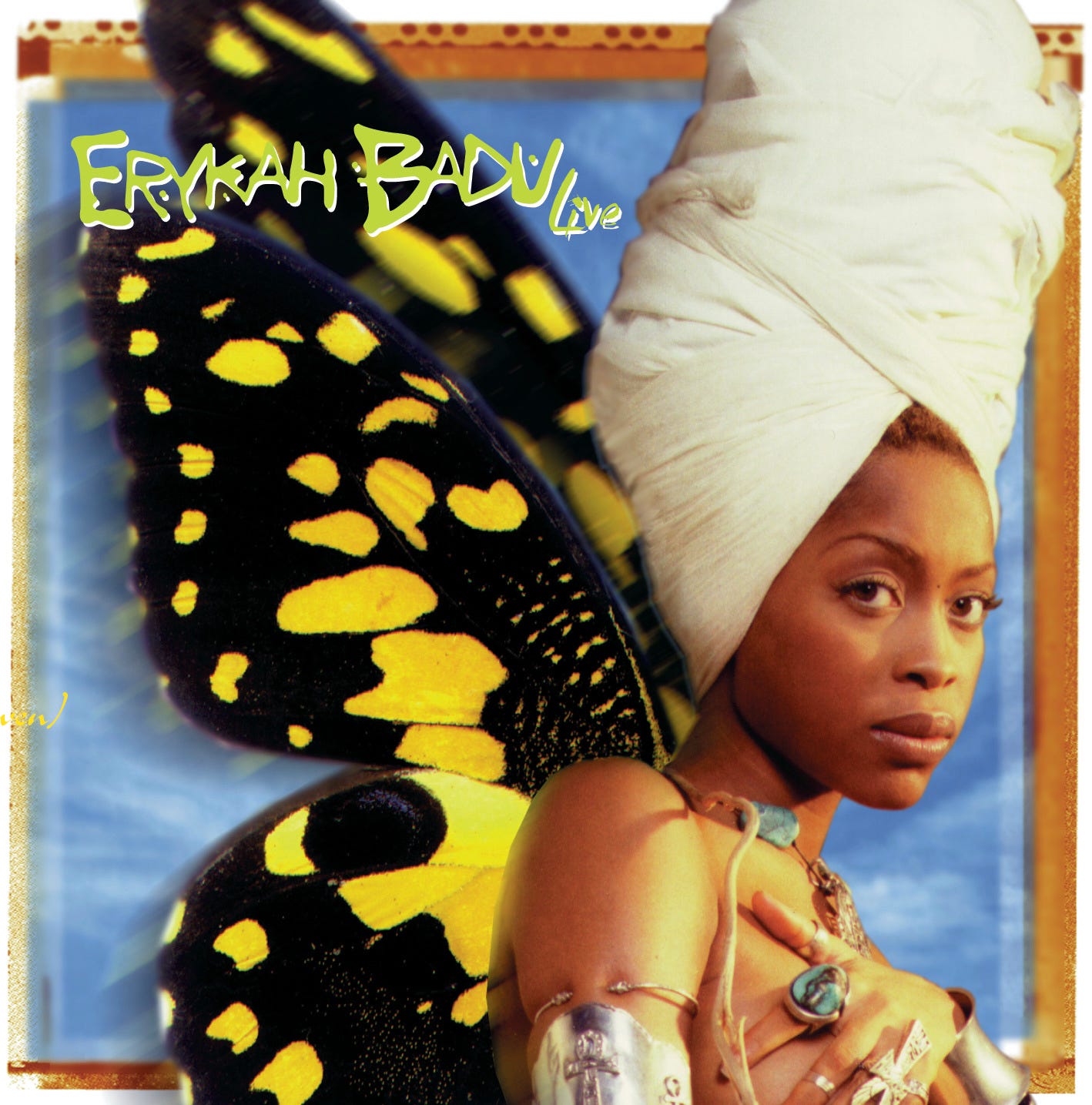
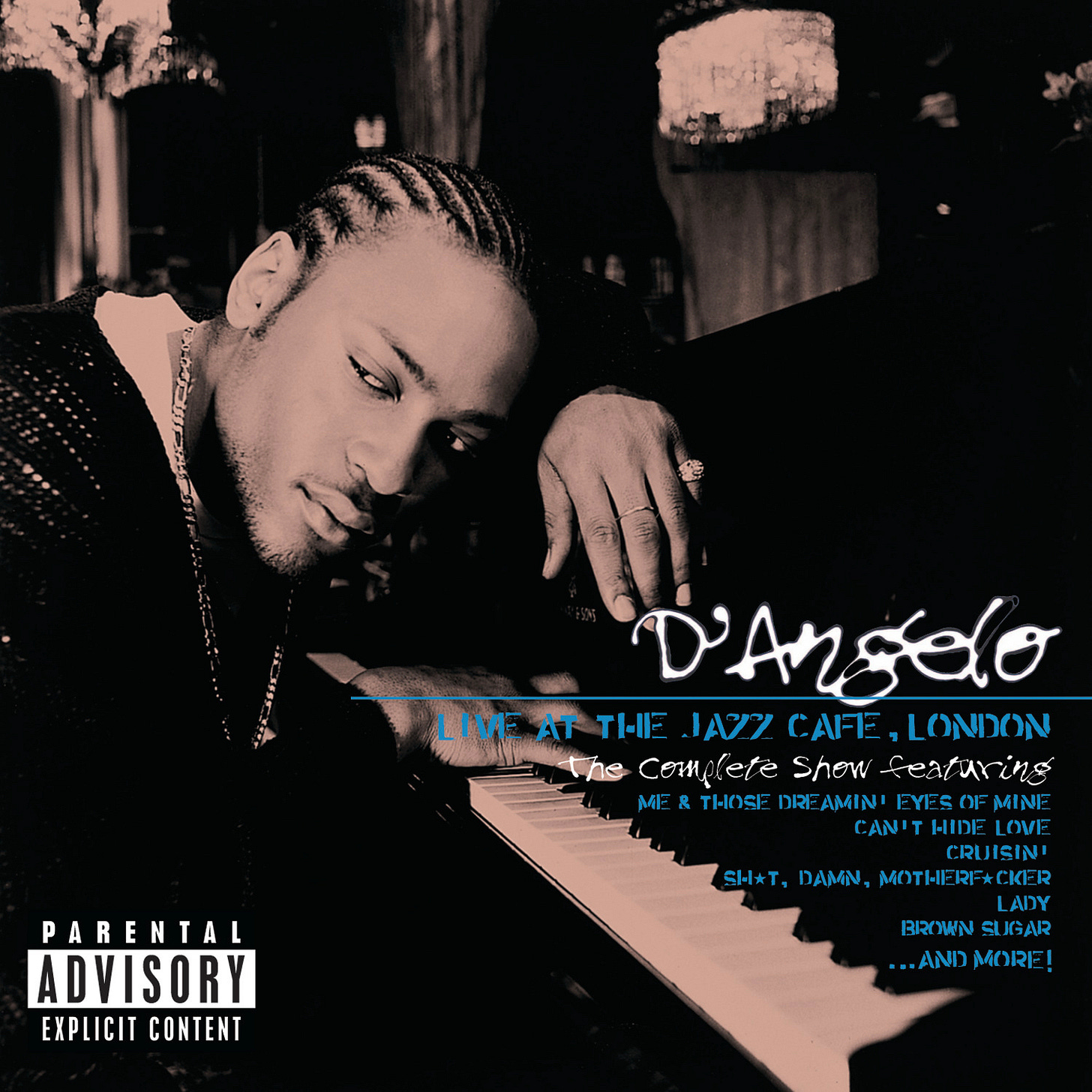
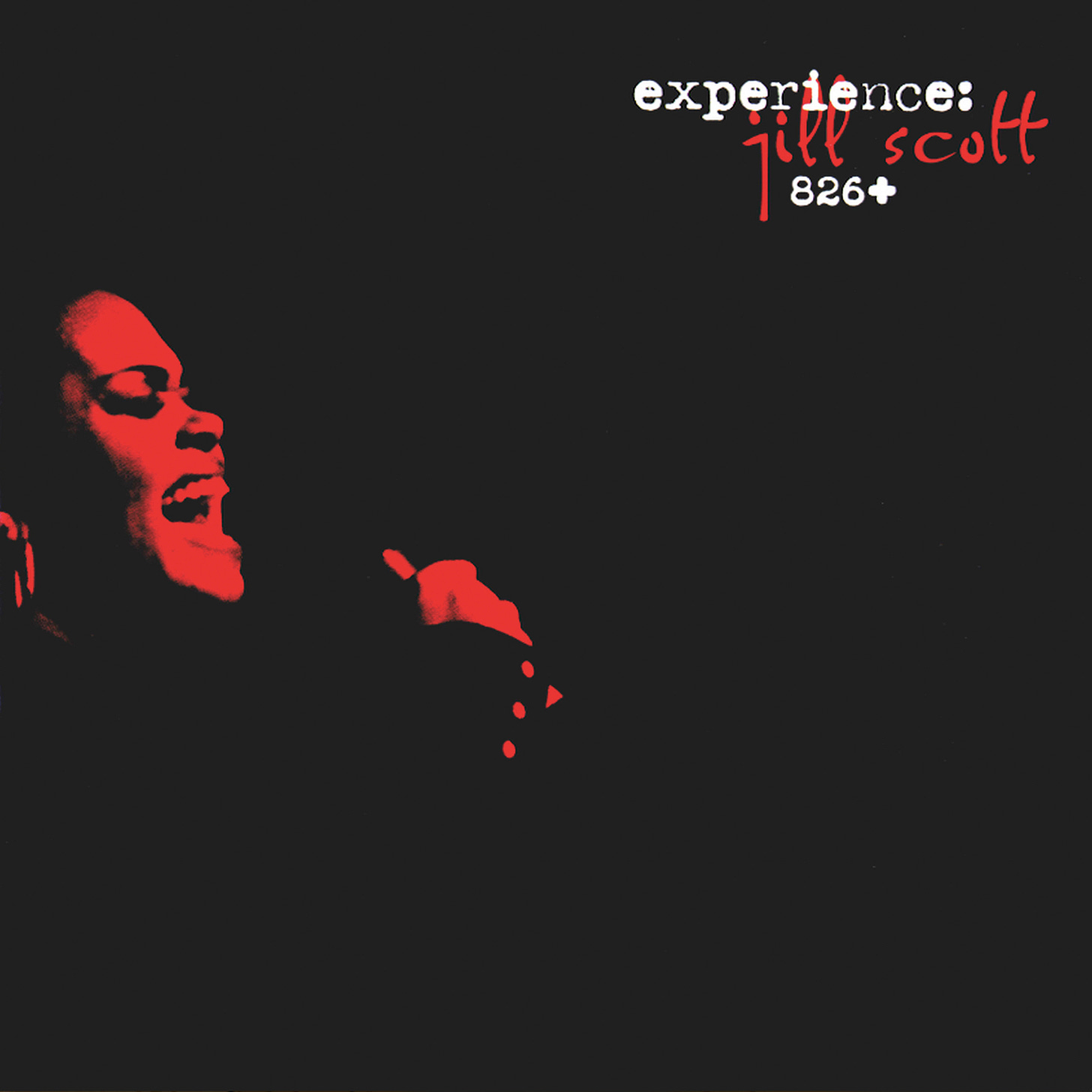
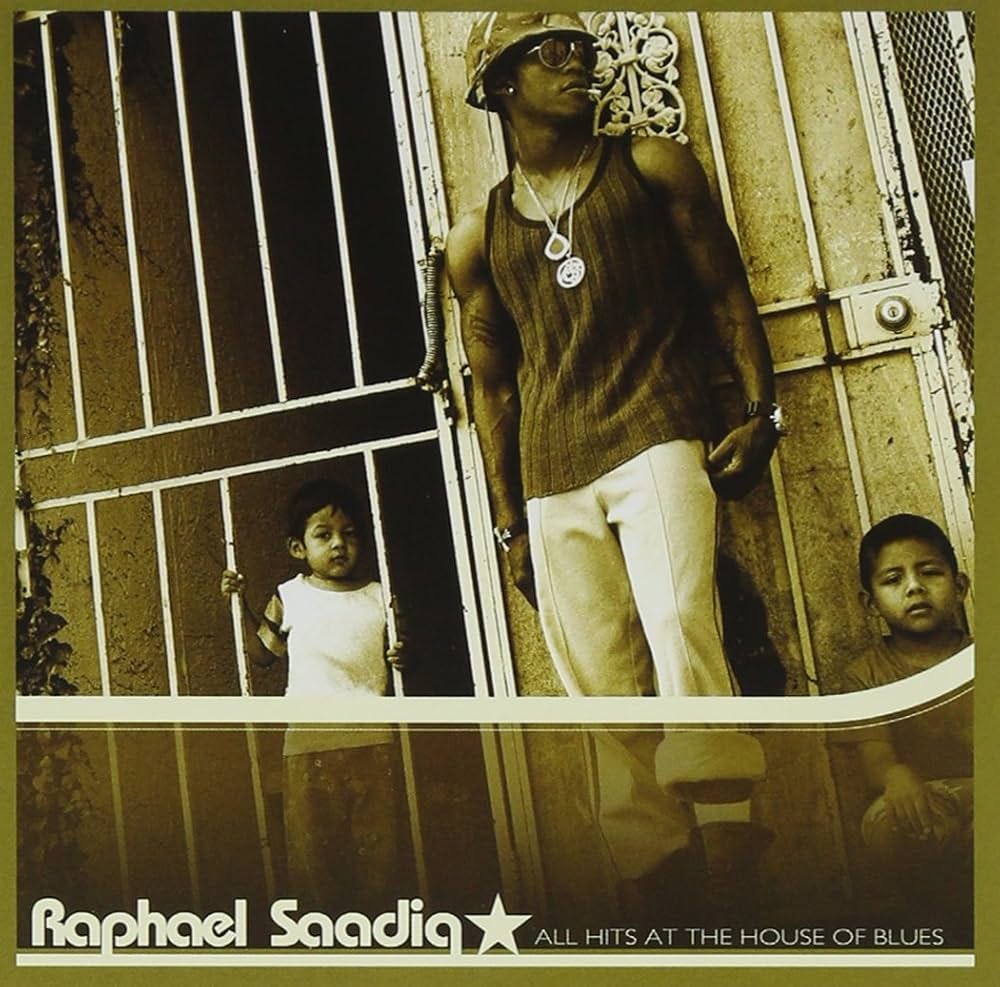
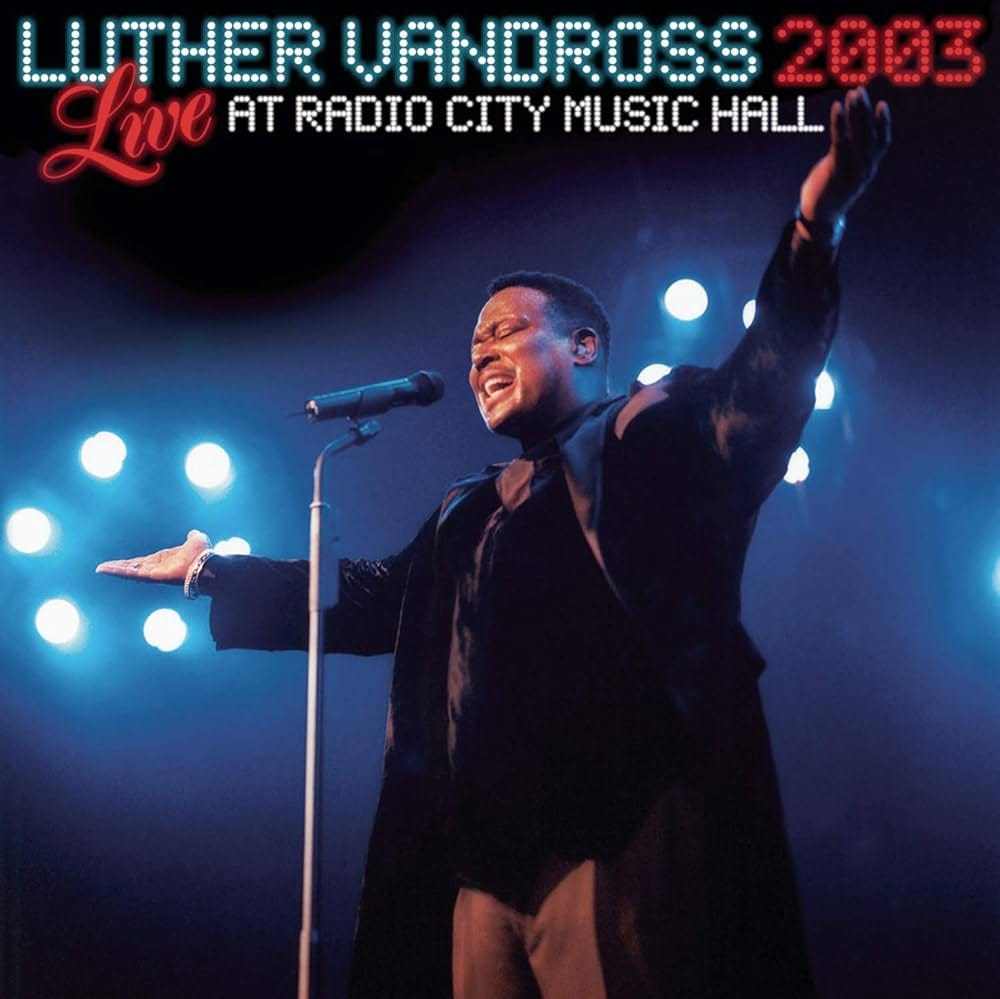
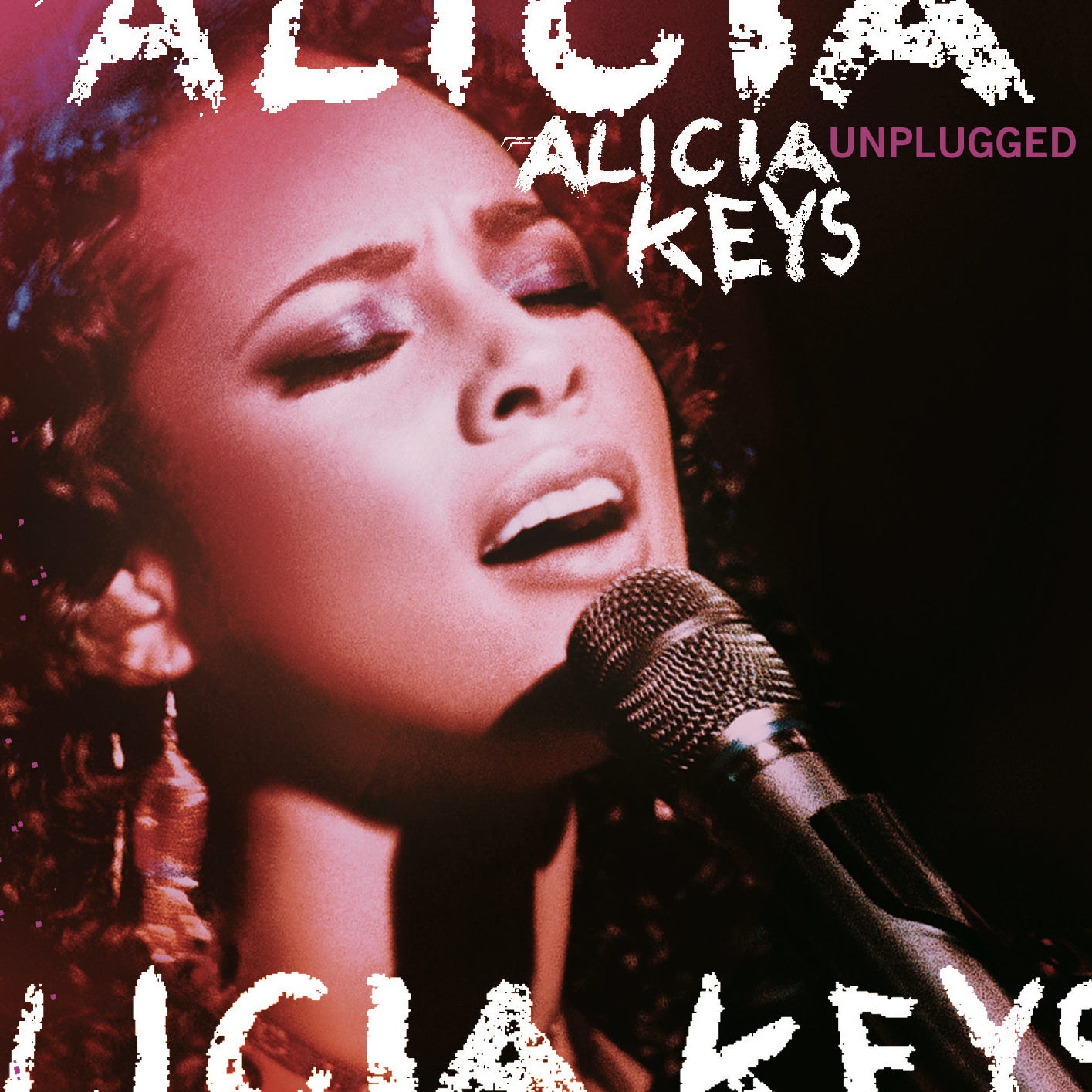
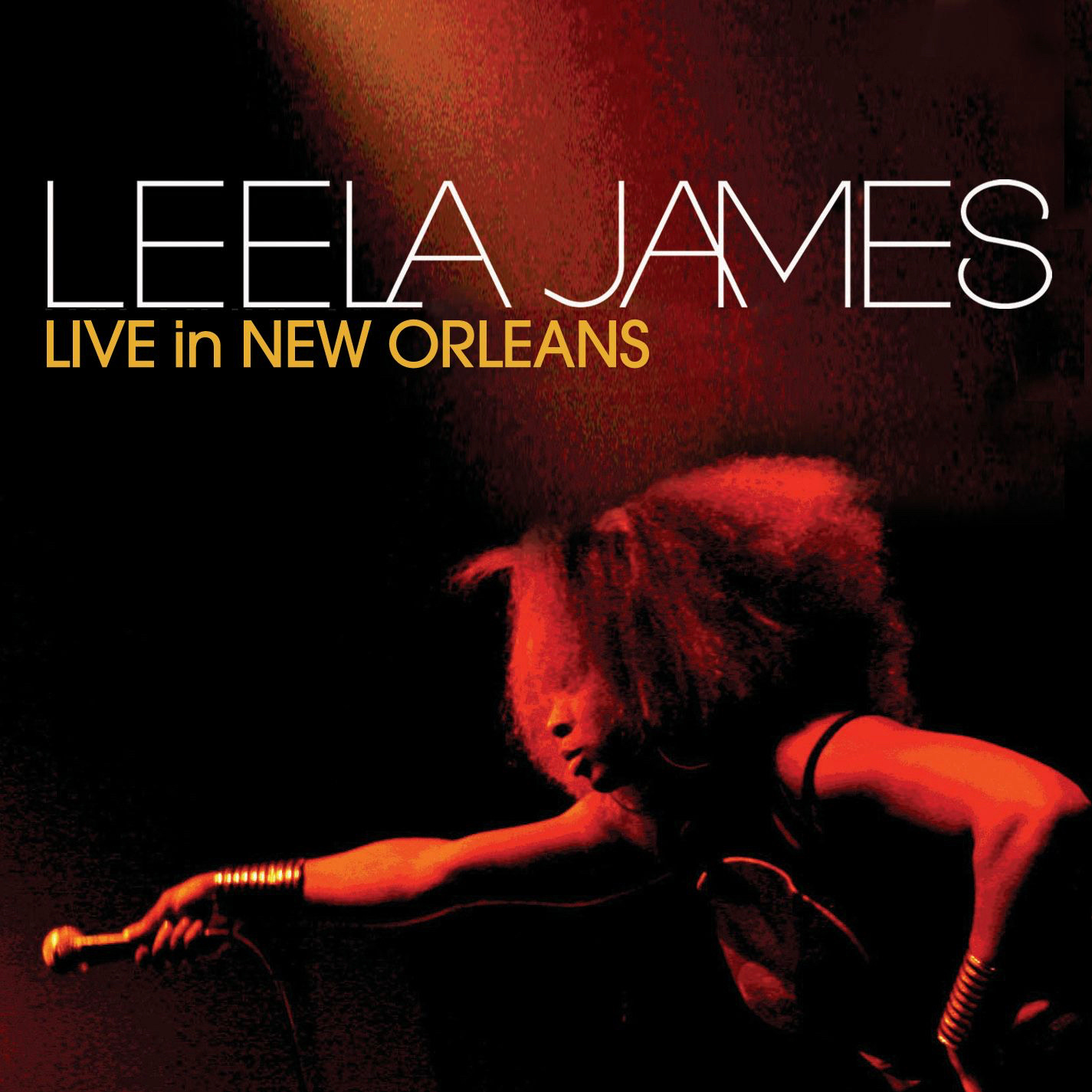
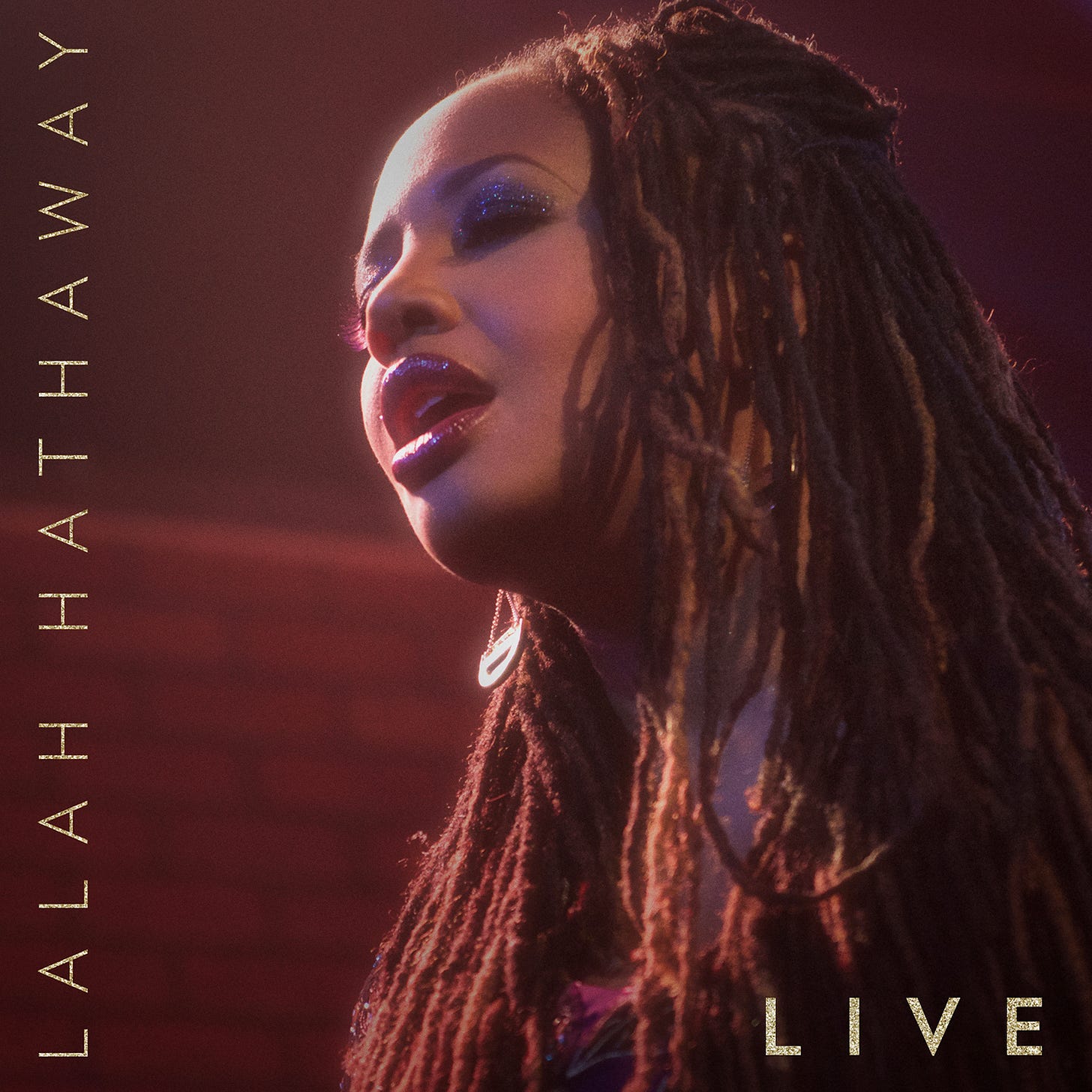
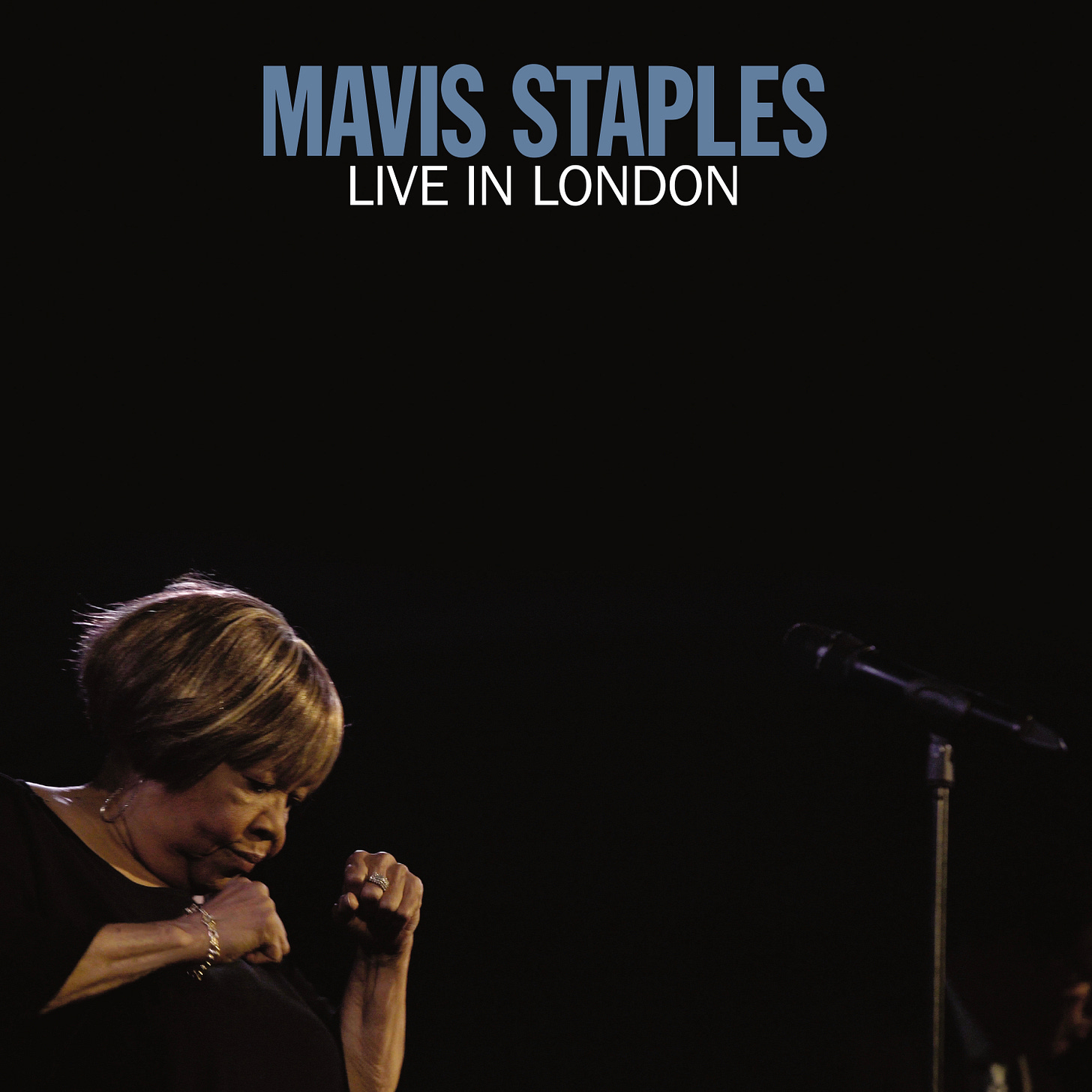
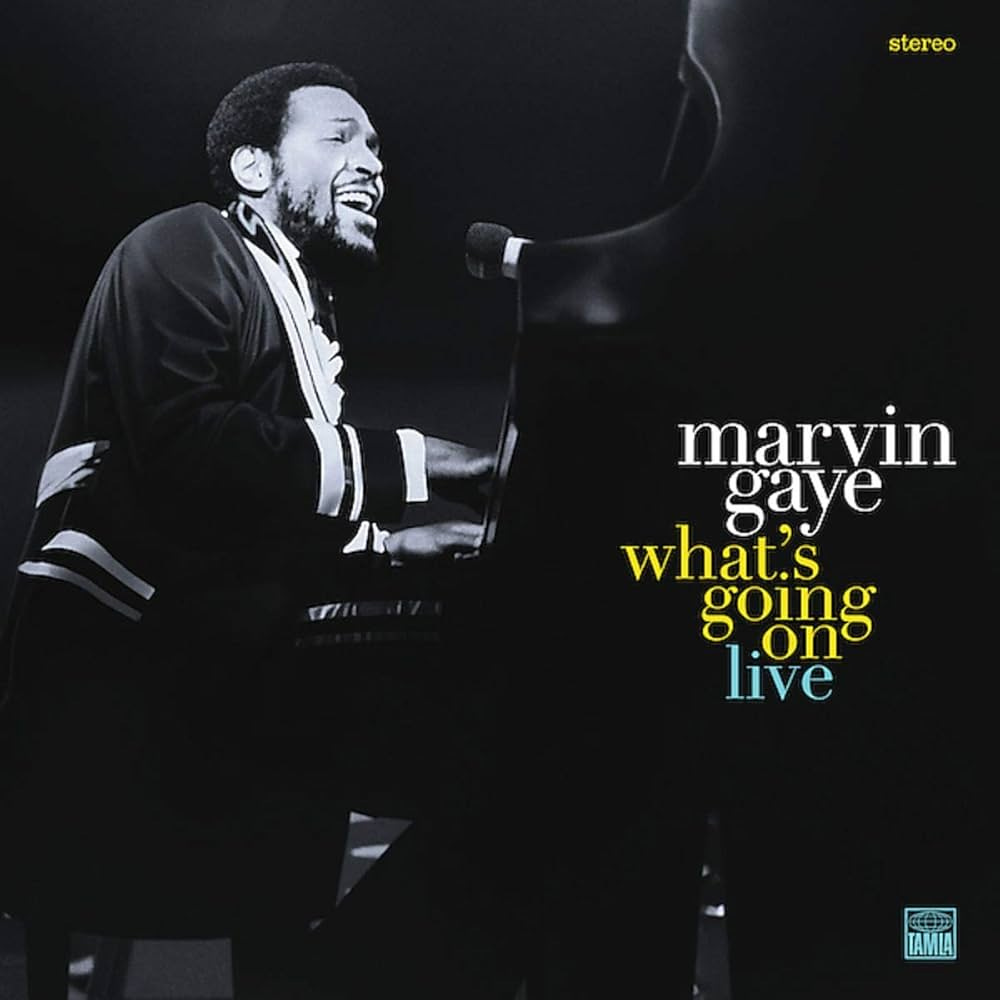
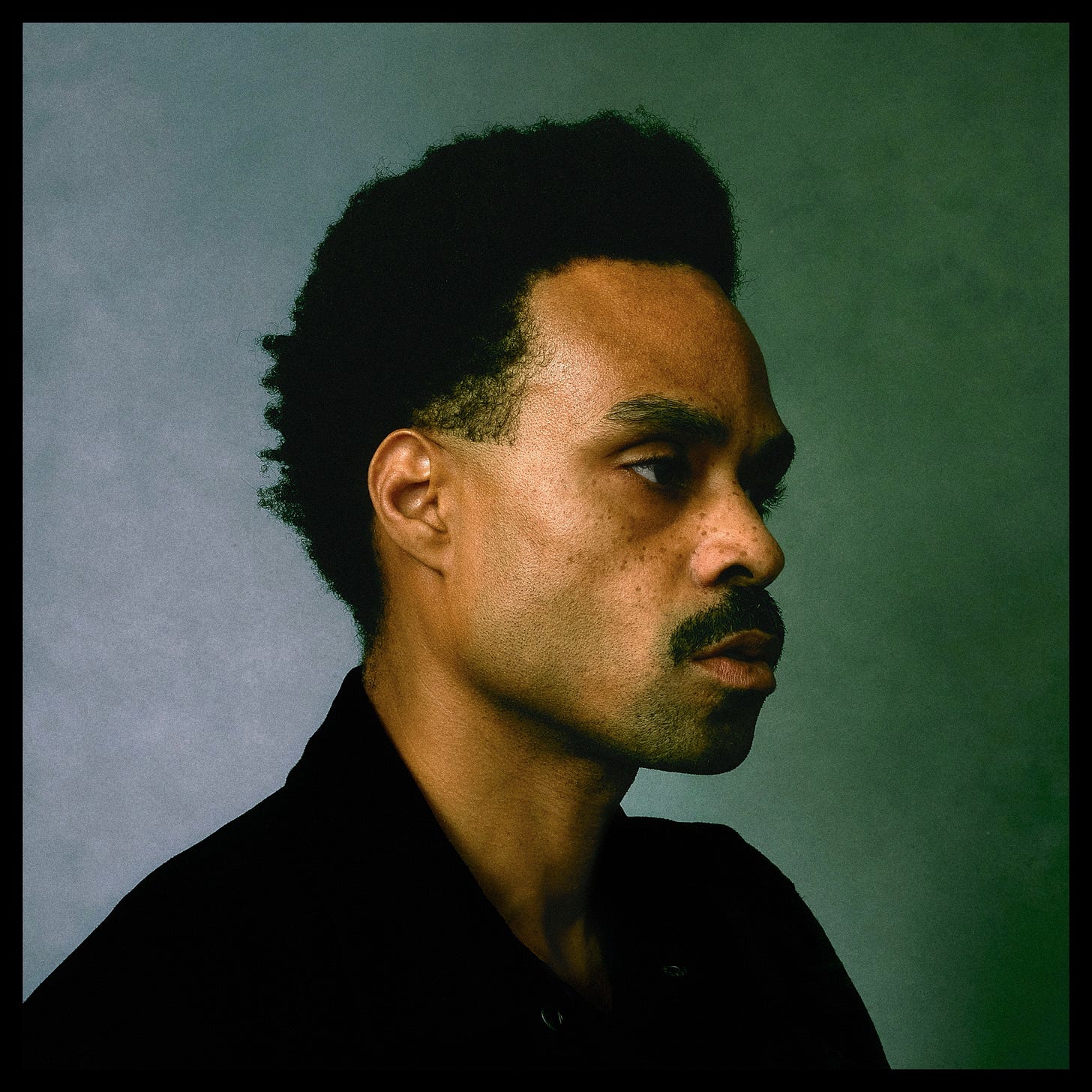
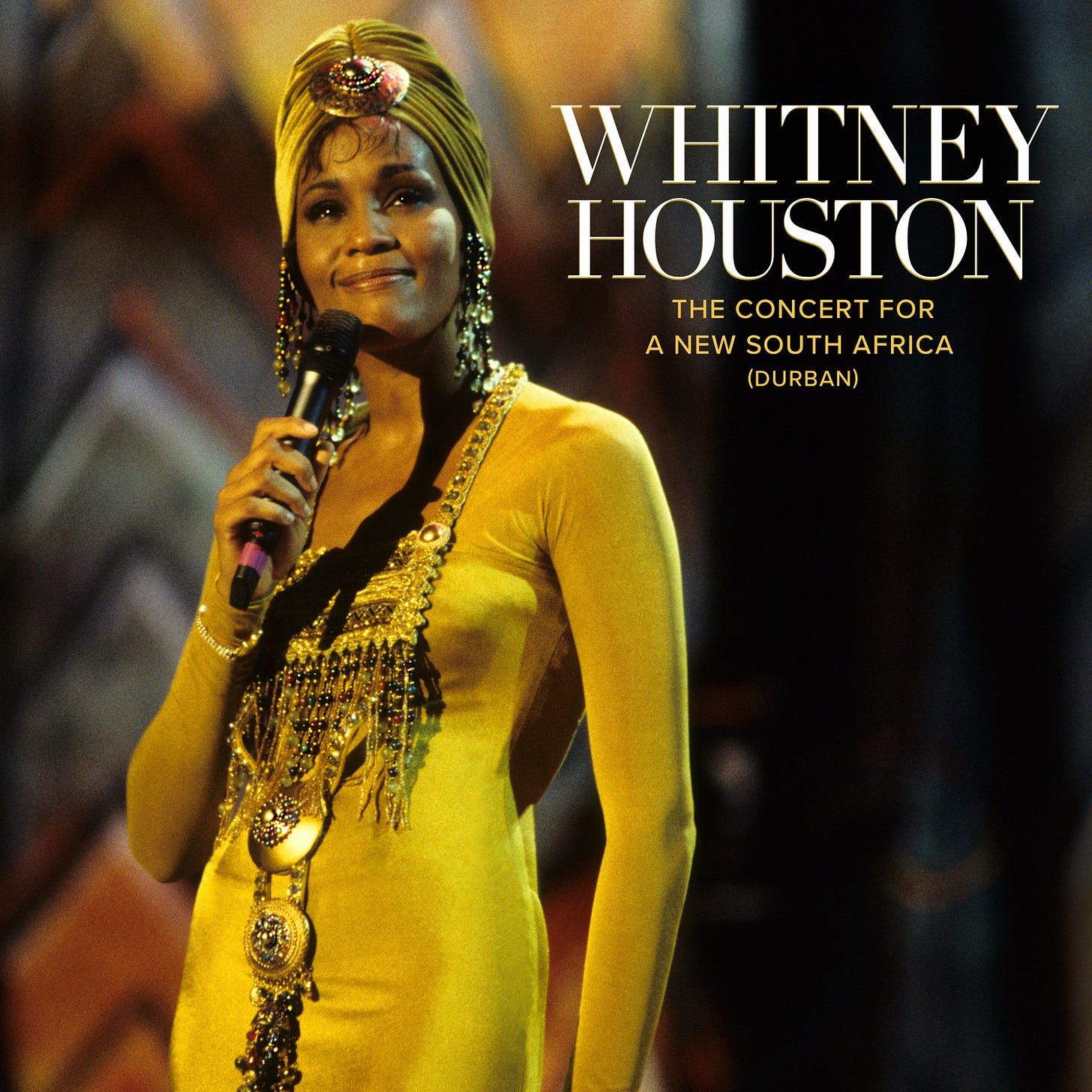
i LOVED 24 of the 25 on your list! You have GREAT taste in music! HOWEVER, you hafto swap Bilal out for Macy Gray Live in Las Vegas. She’s waaaaaay too effin great, WORLDWIDE, an ICON, BRILLIANT…on some Nina Simone type ish, to not be on the list. Then and only then will it be a perfect list.🥰